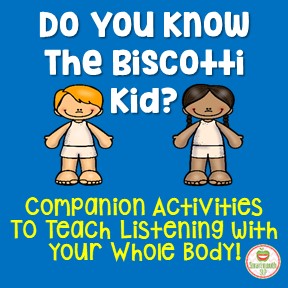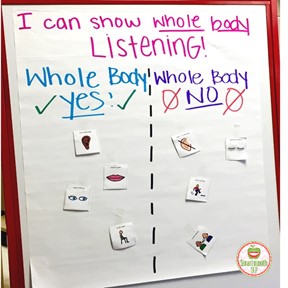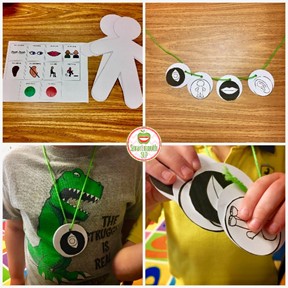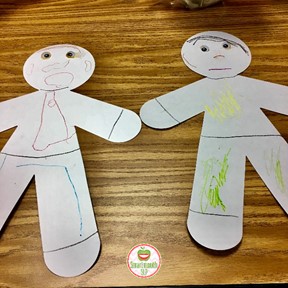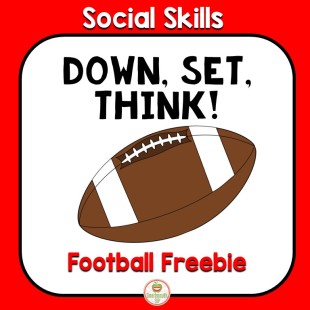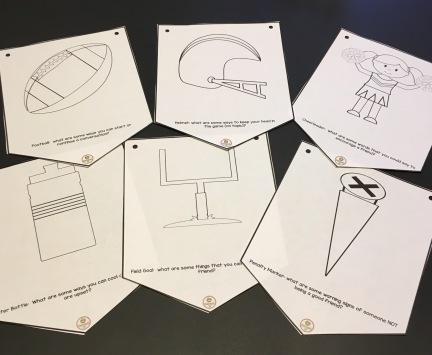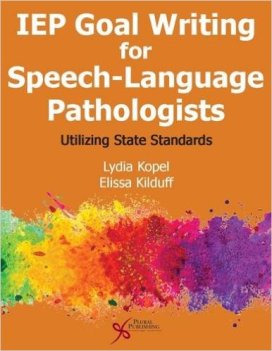
I follow several Facebook speech language pathology groups and have seen over the past few weeks many threads of discussion debating how we discern social language impairments from “just” behavior in our students. It’s a question I get often from my SLP peers during my social language trainings and from my CFs too. I will say right up front that I don’t have a magic checklist or one determining factor that will help answer this question quickly and definitively (sorry). But don’t give up hope just yet as there are tools we can use to help better understand this chicken vs. egg process!
When students are referred to the RTI process in my school system, often the reason is that something has happened (usually multiple somethings), making the student stand out from their peers. The teacher is usually quite frustrated and concerned that their usual bag of tricks isn’t working with this particular student. The first step is to collect information and observe the child not only in the classroom, but less structured environments such as recess, lunch and transition times during their day. Often our kids with behavior issues AND social language impairments hold it together better in highly structured environments and have more difficulty in free range settings, like the hallway or playground.
Talk to the teachers who see this child on a daily basis. Next, ask questions about what the concerns are and what is happening both before and after the situations they are concerned about with the student. It is basically doing a bit of ABC (antecedent,behavior, consequence) analysis, which is very helpful in teasing apart this issue. We also ask our teachers and parents to fill out a social language checklist AND a behavior checklist as part of our RTI process. It is not unusual for the parents to report a very different child at home. There are far fewer structured social expectations at home than during the school day, and families naturally adjust their behaviors, supports and reinforcements to keep the peace in the home.
It’s always interesting to me to look at the information and see if the student is consistent in their behaviors or inconsistent. If the student is cursing at only one teacher who constantly sets them off but not anyone else, then it may be a setting (or person) specific behavior. Can they pick and choose where and when they are using the spoken and hidden rules of school? That is another clue that it may be a behavior and not necessarily a social language impairment. Our students with social language impairments are fairly consistent in not understanding or being able to apply social rules, especially the hidden ones!!
The occupational therapist (OT), counselor,teachers and parents need to all be part of solving this equation as well. We need to tease out the underlying pieces that may also be contributing to what we are seeing in the classroom. Is it difficulty with sensory or emotional regulation? Is it significant anxiety? Is it a mood disorder or attention/impulse control weakness? Is the child getting any positive behavior rewards? It’s easy to get caught in the “No David” cycle with tough kids, so we need to really try hard to catch them being good and reinforce the heck out of those moments! Are we reinforcing negative behaviors by giving them attention? Both positive and negative attention from an adult can inadvertently feed the attention monster! Are the behaviors working to help the student escape a non-preferred activity? We once had a student that was a runner. The administrators decided that having the student hang out with the principal and play on her ipad after he ran away was a good calming tool for him. Ummmmm, nope. It was totally a POSITIVE reinforcer to chat with adults and play before heading back to class. Needless to say, it was not an effective deterrent.
Chaos in the classroom is not the friend of any student, but especially our students with social language impairments or emotional-behavioral challenges! Is there a clearly defined, positive reinforcement behavior system set up for the class and does the student understand it? What works for one doesn’t always work for all. As I tell families that I work with, when we start to put a plan in place to address a behavior, that behavior often gets worse before it gets better. Teachers and parents will throw up their hands and say it’s not working about two weeks in when this happens, but really the plan just needs a little more time. The kids are trying to figure out how far they can push things before the boundary or rule changes, so they up their game before understanding that it won’t change (it’s called an extinction burst in ABA terms).
Are there visual supports in the classroom for transition and work stations? Less language and clear, consistent directives work for both social language impairments and behaviors. Truly, this is best practice and works well with most kids. Do the adults try to reason and talk to the student in the midst of a meltdown? This often just makes our kids even more overwhelmed and upset, so wait until a calm moment after the event to talk it through. As students get older, we need to help them integrate calming and regulating strategies from external sources (parents, teachers, environments) to internal strategies (deep breathing, taking a walk, journaling). Implementing The Incredible Five Point Scale and The Zones of Regulation curriculums in general education classrooms are genius tools to teach these life skills to all students (and it aligns with PBIS beautifully).
Ultimately, we need to remember that identifying the label isn’t really the goal of this process. Behavior and social language are often tightly intertwined. The goal is figuring out how we serve the student with the appropriate level of support to be successful academically AND emotionally in school (and in life). This can be in the special education setting and/or the general education setting. Many of my students who are served through an EBD classroom also have social language impairments and many of my students with social language impairments also have behaviors! We don’t “fix” these students, we provide strategies and supports to help them figure out how to function in a social world more successfully. This is not a quick process and in some circumstances, it is life long work. Lastly, it should NOT fall on just the SLP to be the only go to person in the building to figure out these friends or to provide services. It has to be a team approach to be successful and has to begin in the general education setting way before the student enters special education!
Share your thoughts here on how you discern behavior vs. social language impairment…
